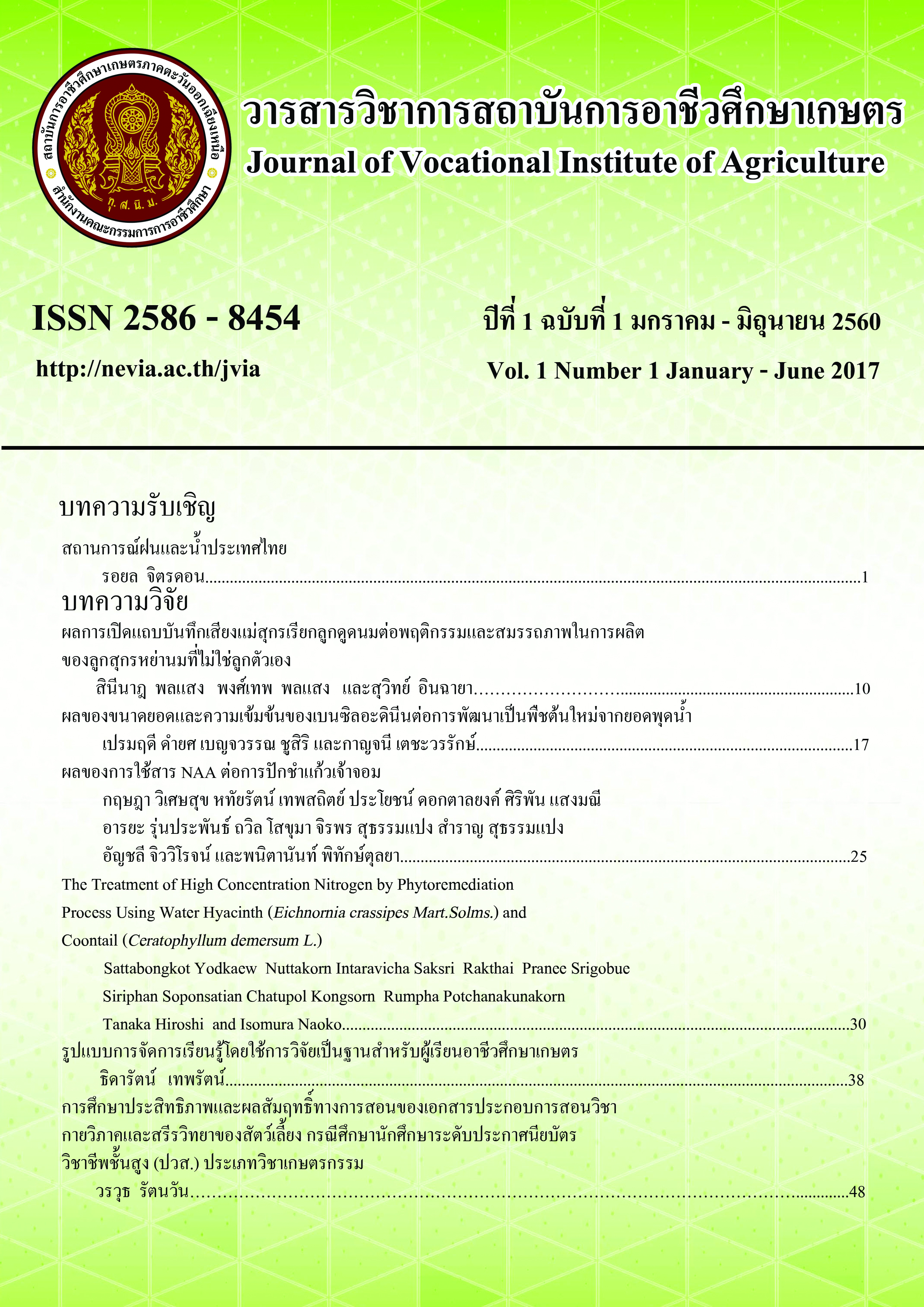The Treatment of High Concentration Nitrogen by Phytoremediation Process Using Water Hyacinth (Eichnornia crassipes Mart.Solms.) and Coontail (Ceratophyllum demersum L.)
Main Article Content
Abstract
Nowadays, high concentration nitrogen from community and agricultural areas were the major sources of urgent environmental issues, which had motivated this study. The objective of this study was to compare the efficiency of high concentration nitrogen removal between water hyacinth (Eichhornia crassipes Mart. Solms.) and coontail (Ceratophyllum demersum L.). The experiment used laboratory scales and performed at National Institute of Technology Okinawa College, Japan. The experimental device was plastic cylinder with 4 L of 50 mg/L nitrogen concentration (inorganic form) and without the top cover. The experimental designs were divided into three groups; no plant or control, water hyacinth and coontail, each group included three replications. The experiments had been started on August 2016, and run for 15 days period. Water samples from experimental vessels were collected and analyzed every day by economical simple pack-kit method. The results showed that water hyacinth and coontail were removed total nitrogen as much as 80%, and 50%, respectively.Total phosphorus as much as 0%, and 0%, repectively. This research concluded that water hyacinth was more effective for high concentration nitrogen removal than coontail under the experimental condition. We also had discussed the limitation of the latest experiment.
Article Details
The content and information in articles published in the Journal of Vocational Education in Agriculture are the opinions and responsibility of the article's author. The journal editors do not need to agree or share any responsibility.
Articles, information, content, etc. that are published in the Journal of Vocational Education in Agriculture are copyrighted by the Journal of Vocational Education in Agriculture. If any person or organization wishes to publish all or any part of it or to do anything. Only prior written permission from the Journal of Vocational Education in Agriculture is required.
